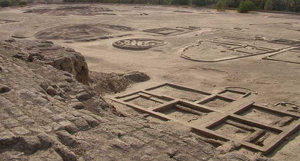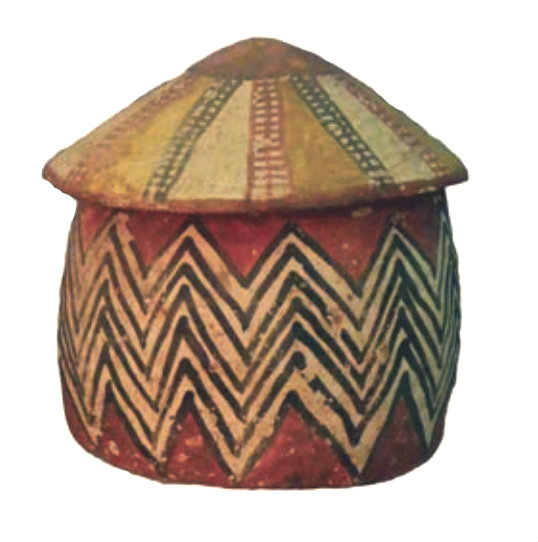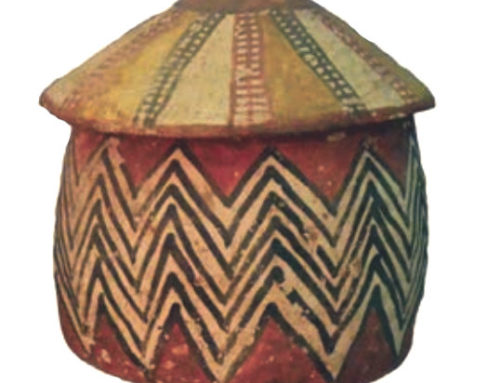You might get the impression from colonialist accounts that people in Africa were all living in mud huts when the Europeans started to enslave them in the 1400s. But the world’s first serious stone architecture is African, and a lot of European architecture, from Greek temples to Islamic mosques and Christian cathedrals and bell towers, is based on African models. (Some influence went the other way, too!)
By the time Europeans arrived, most Africans lived in stone or brick houses, and worshipped in big stone mosques or churches. I made this map awhile ago; today I would put mudbrick buildings all across the Sahel, south of the Sahara, from Niger to Sudan.

The green shows where people were building by 1400 AD
But anyway you can see that stone architecture dominated the coasts, where most people lived, and gradually was working its way down the Atlantic coast too.
Early African architecture
In Sudan, people were building mud-brick palaces by about 1750 BC, experimenting with rounded apses and circular buildings. In Egypt, further north, people had already been building in stone for some time. They started out building solid buildings, like a hill with a stone surface on it or a sand castle – that’s the Pyramids.

Royal buildings at Kerma (modern Sudan), ca. 1750 BC
But by about 1500 BC, the Egyptians figured out how to build stone temples where columns held up the roof.

Courtyard at Luxor
This idea spread to Greece, to build the Bronze Age palaces and later Greek temples, and to West Asia and eventually to India. It spread south to Sudan, too, where people were building stone palaces by 900 BC:

African architecture in the Iron Age: Palace at Meroe, ca. 900 BC (thanks to Royal Ontario Museum)
The rulers of Sudan (many of whom were women) were also building small pyramids for their tombs:

Pyramids at Meroe (modern Sudan) ca. 700 BC
Meanwhile, people in more remote, poorer parts of Africa were building round houses with thatched roofs, often painted in patterns like you see here:

Many people in northern Europe also lived in thatched mud huts at this time.
Iron Age African architecture
Brick architecture – better than mud-brick, but cheaper than stone – started to appear in Africa in the Iron Age. By 700 BC, people were building brick towers in Ethiopia.

Tower at Yeha (Ethiopia), ca. 700 BC
By the time the Romans conquered North Africa, Greeks and Carthaginians had already been building Greek temples there for hundreds of years.

Temple of Zeus at Cyrene (modern Libya), ca. 475 BC
Further south, in Sudan, people were now building temples to African gods like Hathor.

Hathor temple at Naqa (modern Sudan), ca. 10 AD
The Romans brought their own ideas about architecture, and built big stone amphitheaters that dominated the landscape, where gladiators could kill anyone who tried to revolt against Rome, and everyone could come watch.

El Djem amphitheater in Tunisia
Some of the earliest known Christian churches are in Africa, too.
Medieval African Architecture
After the fall of Rome, many people in Africa converted to Islam and started to build mosques. One of the earliest big mosques in the world is in the Islamic holy city of Kairouan, in Tunisia:

Kairouan (about 800 AD)
This mosque at Kairouan served as a model for the European mosque in Cordoba, Spain, and also probably helped inspire Charlemagne’s chapel at Aachen. Egypt was very rich at this time, and built big fancy mosques.

Al Azhar Mosque, Cairo, 970 AD
Islamic rulers also built many schools and universities; this one is in Morocco:

University of Fez, Morocco (1130s AD)
The minarets that people were building in medieval North Africa inspired Christians in Europe to build bell towers, like the ones at St. Germain des Pres in Paris and the famous Leaning Tower of Pisa (a sort of failed attempt).

Minaret of Koutoubia mosque, Marrakesh (Morocco, 1100s AD)
By this time, people were also building mosques in West Africa, at Timbuktu and Djenne, but these were built of mud-brick.

Mudbrick walls and the Djenne mosque (Mali)
Stone architecture was spreading south along the East African coast, so that people were building stone forts and palaces along the coast, and even further inland in Zimbabwe, moving along the rivers. You’ll find more medieval African architecture here.

Kilwa

Great Zimbabwe
Even on the more isolated Atlantic coast, people were starting to build towns with roads and houses. This is an early European drawing of Kongo:

Mbanza Kongo, capital of the Kingdom of Kongo
There has not been nearly as much archaeological excavation, recording, and reconstruction in Africa as there has been in Europe, because colonization has made Africa both poorer and more unstable than Europe, and Europeans have not wanted to help them record their past – and in some cases have actively tried to deny the African past, so Europeans can pretend they have always been world leaders. A lot of the great ancient buildings we see in Europe, like the basilica at Trier, or the campanile in Venice, or the Greek temples in Sicily, have been reconstructed, and the African ones could be too.




